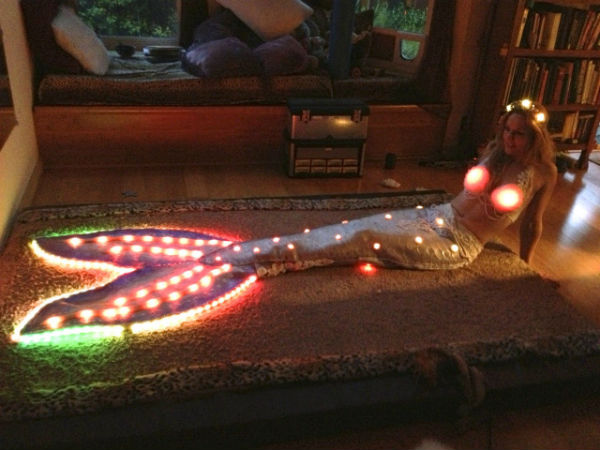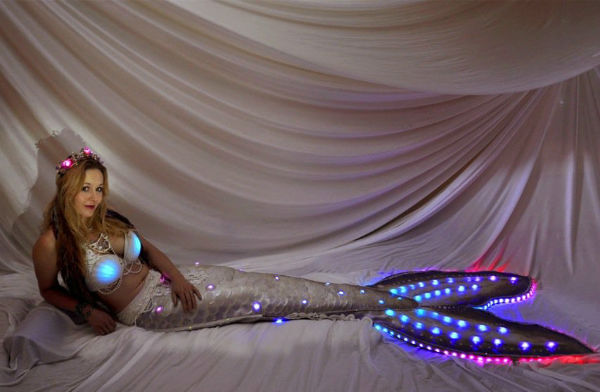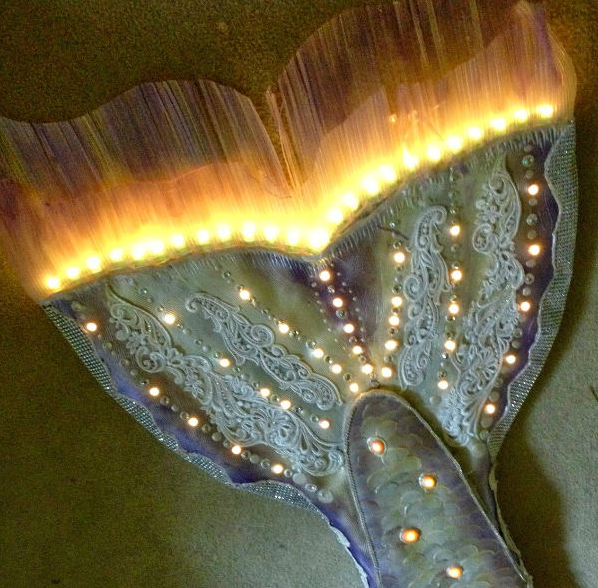The world’s first luminescent LED mermaid tail
Walt Disney’s little mermaid, Ariel, wanted nothing more than to be part of our world, but as it happens, now it seems that we want nothing more than to be part of hers. But while Ariel trades her voice for legs, what would you be prepared to part with for your very own mermaid tail?
The community of Greensborough, North Carolina come together every year at the Merfest Convention to celebrate their mutual appreciation of mermaids through cosplay in £2,500 worth of colourful mermaid tails taking part in workshops, performances and, of course, many photoshoots. The event attracts die-hard merfolk who all bring their tails along for a splash. Not only do these mermaid enthusiasts spend a lot of time creating their tails which are made to feel as close to fish scales as possible, they also spend a lot of time trying to get into them before they get into the water. They each have somebody to assist them in and out of their tails poolside, and these people are called mertenders.

Amongst these beautifully crafted tails, one is sure to catch your eye: Mermaid Glimmer. So what makes this tail stand out against the rest? Well the 180 waterproof LEDs might have something to do with it. Mixing water and programmable LEDs is not an easy task but Erin St. Blaine, Innovation Costume Designer has managed it after three years of experimenting with her design. She has produced the world’s first waterproof, swimmable LED mermaid tail.

St. Blaine started the Mermaid Glimmer project by making an LED swimmable mermaid seashell bra at the end of 2013 which she wore to the NC Merfest convention. After attending the event she decided to create a light-up tail to complement the seashell bra.
St. Blaine first made the tail out of neoprene with a monofin swimming fin. Then, she painted on a scaly texture and decorated it with gems, lace and rhinestones. The mermaid tail features an impressive attention to detail with a high level of handiwork, not to mention the technological design. The original tail weighed 25lbs. However, currently on its third revision, the tail weighs closer to 15lbs. Luckily it’s nearly neutrally buoyant in water, “Though it still takes some time and some serious abs to flip the tail up when it’s wet,” said St. Blaine.
So how do these LEDs work?
The LEDs are controlled by an Arduino micro that connects via Bluetooth to an android app that St. Blaine made for the Mermaid Tail project. The app synchronises the lights to a song that St. Blaine and her husband recorded together. She also used the FastLED Arduino library to get different moods and themes.
St. Blaine has many other projects incorporating LEDs in the costumes. Mermaid Glimmer will certainly not be St. Blaine’s last project even though she said: “If I had known how hard this would be at the outset, I probably would have given up before I started.” However, her interest in innovation costume technology glimmers through. She is currently performing with Mermaid Glimmer at private bookings, photoshoots and mermaid conferences across the country.






